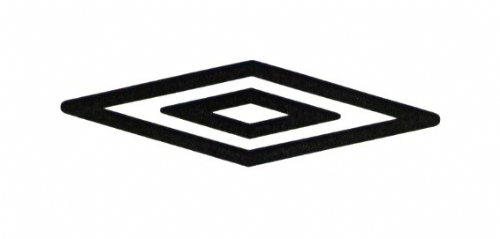Now in its twelfth year, Class 46 is dedicated to European trade mark law and practice. This weblog is written by a team of enthusiasts who want to spread the word and share their thoughts with others.
Click here subscribe for free.
Who we all are...
UK Supreme Court rules on post-sale confusion
 The UK Supreme Court recently published its judgment in Iconix Luxembourg Holdings SARL v Dream Pairs Europe Inc and another concerning two UK trade marks for the UMBRO double-diamond logo, registered for goods in class 25 and widely used on football boots (pictured right)
The UK Supreme Court recently published its judgment in Iconix Luxembourg Holdings SARL v Dream Pairs Europe Inc and another concerning two UK trade marks for the UMBRO double-diamond logo, registered for goods in class 25 and widely used on football boots (pictured right)
 Iconix, the trade mark owner, alleged that the Dream Pairs logo (DP sign, pictured left) as used on football boots sold in the UK was similar to the UMBRO marks and that its use was likely to cause confusion on the part of the public under section 10(2) of the Trade Marks Act 1994, and also infringed under section 10(3).
Iconix, the trade mark owner, alleged that the Dream Pairs logo (DP sign, pictured left) as used on football boots sold in the UK was similar to the UMBRO marks and that its use was likely to cause confusion on the part of the public under section 10(2) of the Trade Marks Act 1994, and also infringed under section 10(3).
The first instance judge found no infringement, saying there was “at most a very low degree of similarity”, but this finding was overturned on appeal: the Court of Appeal said that when the DP sign was viewed from any angle other than square-on, there was “a moderately high level of similarity”.
In its judgment on 24 June, the UK Supreme Court made the following findings:
- It rejected the submission (made by Dream Pairs) that extraneous circumstances such as how the goods are marketed or subsequently perceived are not to be taken into account in assessing similarity between the mark and the sign.
- It agreed with the Court of Appeal that “it is possible in an appropriate case for use of a sign to give rise to a likelihood of confusion as a result of post-sale confusion even if there is no likelihood of confusion at the point of sale”.
- It found that: “This was a case in which there were not matters such as irrationality, error of principle or of law which justified the Court of Appeal in substituting their own different view of the answer to the multifactorial question facing the judge from that which he had reached.” It added: “We would readily acknowledge that reasonable judicial views might differ on this issue about similarity when viewed from an angle, but our task is not to form our own view, unless both the judge and the Court of Appeal made what may loosely be called appealable errors.”
The Court’s ruling reinstates the first instance finding of no infringement.
Posted by: Blog Administrator @ 16.56Tags: UK Supreme Court, UMBRO, Iconix, post-sale confusion,


 Sharing on Social Media? Use the link below...
Sharing on Social Media? Use the link below...Perm-A-Link: https://www.marques.org/blogs/class46?XID=BHA5365

